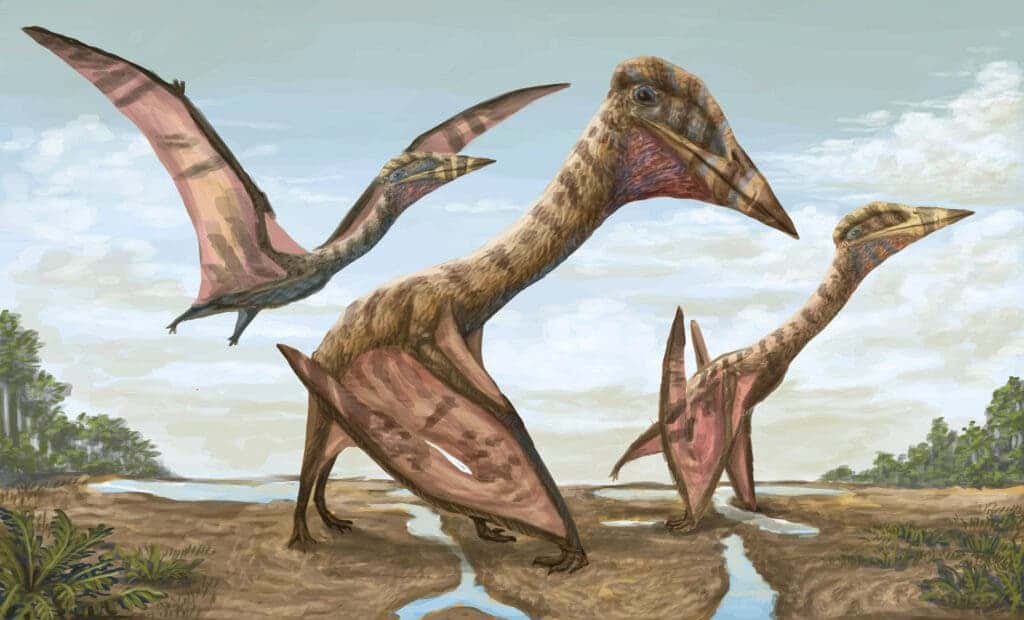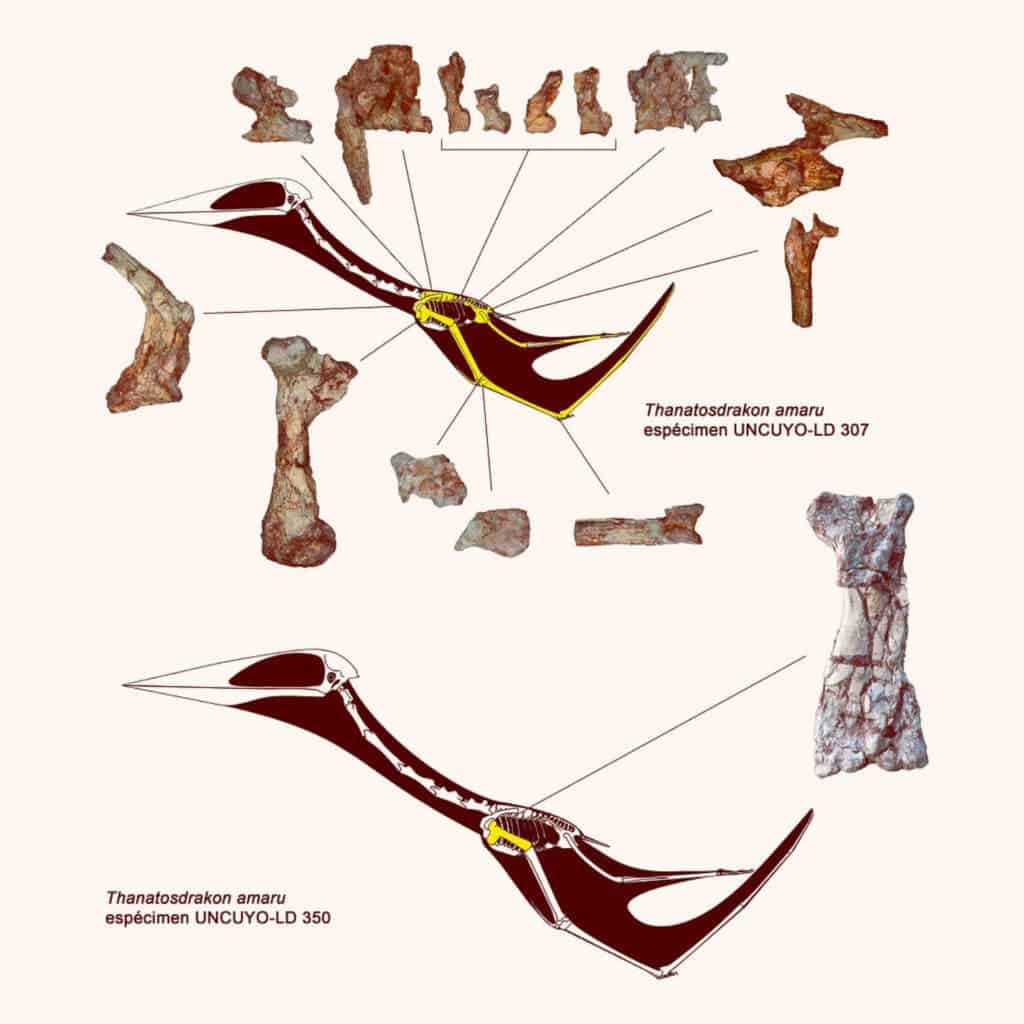This article is part of our Fossil Friday series, where we present fresh and exciting findings from the world of paleontology — on a Friday. See more stories from this series here.
Researchers in Argentina have unearthed the largest flying reptile species we’ve ever seen in South America.

Reconstruction of Thanatosdrakon amaru. Image credits Universidad Nacional de Cuyo.
The finding consists of two huge specimens belonging to the Azhdarchide family of pterosaurs, which lived between 66 and 146 million years ago in a period known as the Late Cretaceous. The species has been christened Thanatosdrakon amaru meaning “dragon of death”.
The fossils were excavated from the Plottier Formation in the Mendoza province, central Argentina.
Ancient flying threat
“The remains of Thanatosdrakon present different particularities that allow us to differentiate them from other known pterosaurs,” study lead author Leonardo D. Ortiz David. “Fundamentally, these characteristics are found in the vertebrae and limbs. This allowed us to establish a new species of pterosaur.”
“It’s the dragon of death. We don’t have a current record of any close relative that even has a body modification similar to these beasts. This species had a height similar to that of a giraffe, and a wingspan that defies the limits of our biological understanding.”
T. amaru is the largest-ever pterosaur found in South America, and one of the largest flying vertebrates in the world. Pterosaurs to were the first creatures to hunt from the air. They evolved some 20 million years before the Cretaceous-Paleogene extinction event that wiped out the dinosaurs.
The fossils were found during construction work for a civil project on a site outside of the City of Mendoza. Archeologists were supervising the site as this area has yielded important fossil discoveries in the past, including Notocolossus, a genus of titanosaurian sauropod that is one of the largest dinosaurs in the world, back in 2016.
One of the specimens grew to have a 23-foot wingspan, while the other reached a 30-foot wingspan during their life. Judging by these figures, the team that described the findings believes one of them was a juvenile. Although it is very likely that the two animals died at the same time, the team cannot confirm whether the two had any type of familial relationship or if this was just happenstance.

The various bones of the fossils were not all preserved equally well. Some of the bones were intact, while others were found as fragmented pieces. Still, enough of these bones were in a good-enough condition that the team could use them to identify them as belonging to a new species. This is especially surprising as pterosaur fossils are often very fragile and are rarely found in good condition.
“From the beginning, two facts caught our attention: The first was the size of the remains and their preservation in three dimensions, an unusual condition in this group of vertebrates; the second was the amount of remains found at the site since large-giant pterosaurs are only known from fragmentary remains (with some exceptions),” study lead author Leonardo D. Ortiz David told Live Science.
‘Amaru’ is a Quechuan word meaning “flying serpent”, and refers to an Incan deity that lives at the bottoms of lakes or rivers. ‘Thanatosdrakon’ is a compound word of two Greek terms: “thanatos”, meaning “death,” and “drakon”, which means “dragon.”
Images of the reconstructed animal were showcased at the Museum of Dinosaurs in the National University of Cuyo in Mendoza, where the fossils themselves are currently housed, as well.
The paper “Thanatosdrakon amaru, gen. et sp. nov., a giant azhdarchid pterosaur from the Upper Cretaceous of Argentina” has been published in the journal Cretaceous Research.






